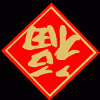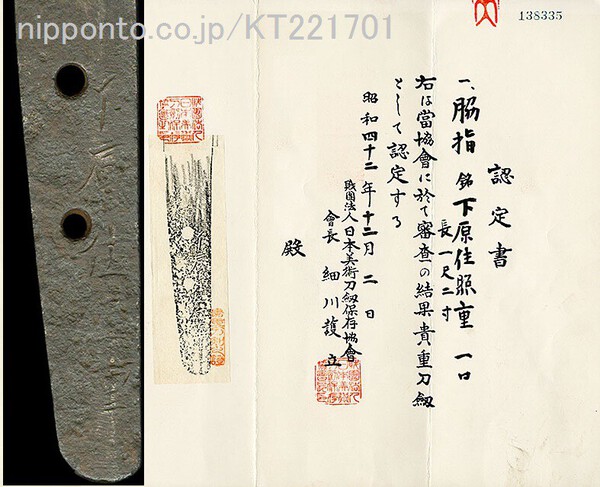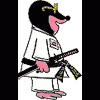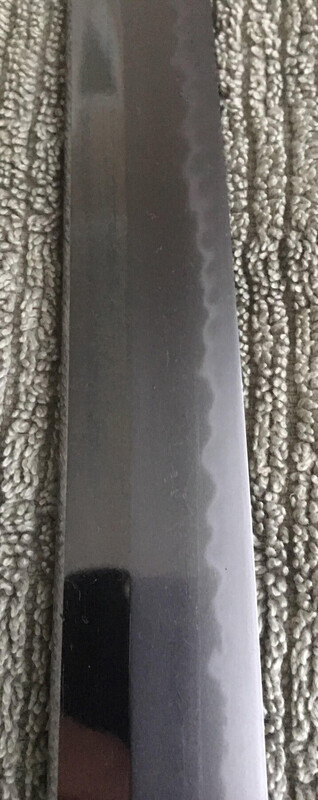Leaderboard
Popular Content
Showing content with the highest reputation on 05/06/2021 in all areas
-
Hi Les and Mark, and y'all of course. In the meantime, and experimenting with proof copies from Lulu.com, I decided to entirely redo the first two volumes and ship these new ones – at my own expense – to all who have purchased any of the them, including, of course, those who have prepaid for the entire set, and the remaining ones the same way. I know, this all is a nuisance, but I need to get this right going forward, that is, I do not want the print quality being an ongoing issue for me/us years to come. That said, I know that Grey and Barry are kicking their heels to proofread the remaining chapters –which I am working on every single day in any case, and they are accumulating on my end – so I apologize for being such a dinosaur, meaning, I suck badly at switching tasks and my reptile brain can only work off stuff in big batches. Now the broken record is being put on again, but I can promise you that as long as I am alive and not turning into a vegetable, I am working constantly on all outstanding projects as their non-completion does really gnaw on my soul5 points
-
Piers, Western anvils have a pritchel hole which you can use. There are also tools that go into the hardie hole that have smaller or bigger holes so you can punch through. Japanese swordsmiths may have similar tools. The punches (or TAGANE) are conically shaped and mostly have a blunt tip. Holes are usually drifted from both sides and the excess filed flat, so there are no 'cushions'. The same applies to drilled MEKUGI-ANA: the 'cushions' have to be filed away, otherwise there would be an obstacle for the TSUKA. Jacques is correct when he says that it is often difficult or even impossible to differentiate between a drilled and a punched MEKUGI-ANA. But on closer inspection and a magnifying glass, you may often see a tiny difference in the respective hole, just as Guido mentions. I have seen drilled holed with a "step" as a result of unprecise drilling from both sides - the Japanese did not have power tools, and drilling steel was probably not at all easier than punching a hole in a red-hot NAKAGO. The advantage of drilling was that it could be done at a much later stage of finish, and I think in later times it was probably often done by the TSUKAMAKI-SHI for easier adapting of the TSUKA.4 points
-
Neil, IMHO, it is often impossible to know if a mekugi ana has been punched or drilled and I think we should let the mekugi-ana aside when we make a kantei.2 points
-
Oh, good. Thanks for that clarification Bruce. I've been busy elsewhere for a few days, so nice to come back to your up-date. I agree with Stephen, the quotes (without clarification) could lead to confusion. While Kuniie was certainly an inspector, there must have been others - an RJT study Gunto Kumia Shimatsu (Gunto Assoc. Management) Rikugun Jumei Tosho no Shuen (The World of the RJT) pub. 1994 by Aizu Bunkazai Chosa Kenkyu Kai in Fukushima shows that the average RJT smith made an average of 10 swords per month (...that means c.370 RJT smiths would make 3700 per month...you would need more than one inspector to check these out to RJT standards.).. Over the years we have accumulated evidence of the stringent rules for making, signing, dating, testing,, stamping etc, etc. While it is possible to come across a RJT blade with the odd 'quirk' in one of these rules, (and I think Bazza has said he's seen RJT with kizu), I think we are pretty sure of the high standards of the RJT system to feel comfortable that an RJT blade is high standard gendaito....whether we like that particular blade or not is a personal taste matter. So, I think we are safe to say that RJT blades were made to high requirements out of tamahagane, pine charcoal and water quenching and are in fact the upper level of the last nihonto made for battlefield use (i.e. not art...although some are very high quality artistic pieces). What we really need is for some of our upper level members to pester the Japanese sword authors to write the "book" on RJT swords/smiths/history......we who respect and collect RJT work really need a good archive sourced, un-arguable book on the actual history of RJT. (Brian...please get our people on to this...Stephen and I are getting older...). Regards,2 points
-
https://www.photographytalk.com/photography-articles/8053-why-all-cell-phones-in-Japan-are-shipped-with-an-annoying-shutter-sound2 points
-
Thank you John. The injury to the hand is a severed nerve, so while I'm unlikely to make a full recovery, there will be significant improvement. I'm feeling very fortunate overall. It was an attempted murder (the guy has been apprehended and charged by police) rather than an accident; but due to some excellent medical care and a few surgeries, the hand is the only major lingering issue. Very briefly, I was out running with my wife and came across a man assaulting a young woman and making death threats to an elderly couple. I intervened, he attacked me and a fist fight ensued. After a few moments he was face down on the ground. While I was calling an ambulance for him, he regained consciousness, drew a weapon, stabbed me in the lung several times (puncturing the lung) and slashed the rear of the right arm (severing a nerve). An eventful day overall. I'm mostly feeling lucky that I survived, wasn't castrated, didn't lose an eye and that nobody else was hurt. Edit: Please edit this as appropriate if there's anything inappropriate or too graphic.2 points
-
Punching was done alternating from both sides, so there’s no outwards facing exit “pillow”, but usually a kind of “step” in the middle of the hole.2 points
-
This was just posted by Andrew Ickeringill ( @Andrew Ickeringill ) on Facebook, and I thought it was worth posting here, and pinning for the future. Andrew is a FULLY trained traditional polisher and one of the most qualified to make these statements. Before bringing up the subject on this forum, and risking a storm of fire, please read this and take it to heart. Amateur sword polishers… I know you probably won’t listen, but I’ll try anyway. Recently, I’ve been seeing more and more rubbish from amateur polishers on the internet, it’s not a new problem, but with social media being what it is, amateurs have been given a platform where they can prosper. It’s beyond frustrating, it’s infuriating, and it's working directly against what I'm striving for, the preservation of Nihonto. I’ve had to correct the damage caused by amateur polishers many times, and the damage is always severe. Correcting these hack-jobs takes a lot of work, and it means removing more steel than would’ve otherwise been necessary if the blade had previously gone to a traditionally-trained togishi. A traditional apprenticeship in togi takes years to complete for a reason, THERE’S A LOT TO LEARN! It means giving up everything else to spend your time in servitude to Nihonto. My apprenticeship was 12 hours a day / 7 days a week / for over 6 years, and even my spare time (what little I had) was usually spent studying nihonto. But if you want to be a togishi, this is the way it must be, you have to go all in. Through arrogance or ignorance or both, amateur polishers have completely forgone this necessary training. Some of them may have attended seminars in Japan, or visited a togishi for a few days… but this obviously doesn’t equate to traditional training. And for many amateurs, the bulk of their training consists of reading books and watching youtube videos of swords being ruined without a clue. Unfortunately, these videos receive plenty of misguided encouragement from those who don’t know any better… “wow, so shiny!”. Amateurs will often argue… “this sword isn’t worth sending to a pro, should we just leave it to rust?”… but how would THEY know? They haven’t been trained in kantei, they have no idea if a sword is worth a professional restoration or not. A cold chill passes up my spine every time I think about this, how many great swords have been ruined by amateurs? I know I’ve already seen a few in my time. If you’re an amateur polisher reading this, let me give you a tip… this job is not for you. This isn’t something that should be attempted by anyone but a traditionally trained togishi, and if you haven’t realised this fact by now, then you need to develop more respect for Nihonto and the craftsmen who have worked their butts off to complete the proper training. Please stop scraping the life away from these works of art, you’re doing far more damage than repair… this job is not for you!1 point
-
Hello all, acquired a few pieces over the past year's mix of COVID lock-downs and while eagerly waiting for the latest to arrive thought I would start a few threads to share the blades with fellow members and provide some more searchable examples of these smiths for the NMB. Also maybe start some discussion if anyone sees anything interesting. The first is a papered NBTHK TH to Ko-Mihara with a sayagaki from Tanobe Sensei. Photos are courtesy of @Ray Singer and will get an in-hand update/photos once it arrives hopefully this week… delayed due to an issue at the DPO transit point . Without a full translation yet but looks like Tanobe-sensei commented that it a representative example of the sword, dates to Nanbokucho jidai, is osuriage mumei, and yuhin (exceptional work). I had been on the lookout for a blade in this style with some helpful advice and comments on other pieces from @paulb . nagasa: 66.3cm moto-haba: 28mm saki-haba: 18mm kasane: 6.5mm The next two pieces to be posted await post-COVID shinsa but have other attributions that might spur some debate.1 point
-
That sword is dated Heisei 13 (2001), 5 years before he was granted Mukansa, I think he did a good job with it.1 point
-
I could of brought you some grapes if I had known. If you come back and need anything let me know. Bryan1 point
-
Guys, PLEASE stop quoting when you are the next reply. It clutters everything. Just reply. Not quote.1 point
-
Thank you John. Thank you Bryan. I was over in Hull for the surgery, it's the first time I've been there for any length of time rather then just passing through. I was at Castle Hill for most of the major surgery and Hull Royal Infirmary for a more minor operation.1 point
-
I have had great dealings with Grey and Mark. Might I suggest this offering from them: https://www.japaneseswordbooksandtsuba.com/store/swords/s125-mumei-tachi-tokubetsu-hozon-tegai-kanekiyo1 point
-
1 point
-
1 point
-
Hi Mark much respect for intervening there are very few people that will now a days, I hope you make a speedy recovery to the best of health. And I would not put pen to paper as what needs to happen to this individual . kind regards Bryan1 point
-
Echizen ju Kinai saku. --Fairly high level of confidence in that reading.1 point
-
Hi Mark, Glad to hear that you're on the mend and I hope you recover quickly.1 point
-
1 point
-
At TNM temporary exhibits usually ban photography, but permanent collection is mostly allowed. Yasukuni if I remember correctly is the opposite - temp usually allows photography, while permanent mostly not.1 point
-
Looks good to me! Yasutsuna dated 2600 - - really patriotism - mebbe not great art. P1 point
-
Wow Mark, RESPECT man. I hope you make as full a recovery as possible soon. And all this in Leeds ? OMG. I visit Leeds regularly for an Iaido residential course with Eikoku Roshukai and l am quite shocked.1 point
-
No good deed goes unpunished! It is very fortunate you are still with us, perhaps it is a good thing overall that you intervened, who knows how it could've ended with someone else. Glad he was apprehended and will hopefully spend the next few decades in prison away from society.1 point
-
Thank you all for the replies it has reassured me that I was not as foolish as I suspected I was. It certainly seemed to choose me after endless looking on sites all over the internet, I suspect I will be bitten by the collecting bug once I hold this sword. How many swords will be enough is now the worry. Regards Steve1 point
-
1 point
-
the copper inserts in the tang opening are very strong indicators that this is Suruga work. I see nothing else to contradict that attribution.1 point
-
Hi Barbara, I'm unsure about the theme, could be snowflake (雪花 - yukibana) or sea cucumber (海鼠 - namako). The hammered surface (tsuchime-ji) could suggest a katchūshi or Myōchin school (or Shōami, of course...), early to mid Edo period, maybe. Just my not-so-educated opinion (waiting some more knowledged people would chime in).1 point
-
Neil, according to the author (Ohmura San) they did, but he didn’t attach the picture. However, he says the the micro photographs did prove that the welding between the shingane and Karaganda was absolutely perfect. This is why I call those swords the best that there are. They may not be traditional but with a modern technique, they succeeded in doing what the swordsmiths had tried to achieve. In a way, this is the best you can do with a sword.1 point
-
1 point
-
1 point
-
Tom, I'll keep on the detective work but would like to join forces with you...so we can bask in the glory together! Or at least get a sunburn in front of one of the beach bars..... I do look forward to the day when we will clink our pint glasses.... Across the street from Yamamura's forge and tucked in the ground floor of a building right beside the tracks is a great little Izakaya....Is that the one? Best, Robert1 point
-
Mark, there seems to be a problem of terminology and knowledge/experience. I am a bladesmith and experimental archaeologist, I make different kinds of blades, and I know what I am speaking about. As my collegues, I do not make Damascus blades for the accreditation of the blacksmithing community or for applause, but to make a living. What you call "true" Wootz damascus is just the oriental way to produce a suited material for blades in medieval times. It is a crucible or crystalline pattern steel. Long before Wootz was made, Celtic smiths (LaTène, ca. 400 B.C.) fire-welded (not hammer-welded) different iron or steel ingots together, folding and twisting it to ensure a homogeneous base material for the manufacture of blades. The aim was certainly not a decorative pattern on the surface of the blades, but after a time of use an irregular 'tangle' would show. Today, we would call that a "wild" Damascus. The Vikings followed a similar way, but were able to produce a pre-designed pattern in the middle section of their swords and seaxes, using different kinds of iron - not steel! The double cutting edge of Viking swords was made separately from carbon steel and fire-welded to the decorative inner core. What we modern blacksmiths produce nowadays is frivolously called "Damascus" steel as well, but is different in material. We use low-alloy high-carbon tool steel of different composition. Each of the components is hardenable and would work for a good mono-steel blade, so the composition is - if competently made - as good as the single materials (Damascus steel is per se not better than a good industrial steel, but nicer to look at). The steel components are fire-welded together, folded and/or twisted, stacked again, and finally forged out for a blade. Besides the standard patterns, there are many variations like Mosaic Damascus, repeated pattern, SAN MAI construction, multi-bar construction, a.s.o. All that has nothing to do with Japanese blades! The Japanese KAJI did not intend to show a strong contrast in the JI of his blades, but the aim was a very homogeneous steel which showed in the perfect regular HADA. I hope that helps a bit to understand the subject.1 point
-
1 point
-
Probably a fake signature however the value is in the swords merit individual The sword is extremely undervalued because of the Bizen area and being a fMei Sukesada smiths in Kototimes made for strength in battle also excellent polished with pristine mounts hard pressed to find another like it Enjoy it it’s a great sword1 point
-
Yep, I remember Stockholm better and I know few very special items will be coming up I agree with the time issue in live meeting, that was definately happening at Utrecht, so many things to see and people to meet and greet. I do think slow approach like this is good for us not too knowledgeable with fittings. I can take time and slowly research the item, vs. live I cannot understand all the details and background info in a short time I have viewing the item.1 point
-
Hi J.W. You can take this to shinsa and you will get a paper, but the paper will say Sukesada, which you already know, so why bother? Depending on the group doing the shinsa they might specify a period of manufacture but it will be late Koto (16th century), which you already know, so why bother? Save your money for study and swords; in this case a paper makes no sense. Grey1 point
-
Here is one of his swords (not for sale) http://www.samuraisword.com/nihonto_c/SOLD/gendaito/Sanekuni/index.htm Brian1 point
-
0 points
-
I stopped reading at the ”by 1544 massproduction of the Tanegashima was was in full sving all over Japan” or something to that effect. At 50-60% historical accuracy, you should not spend too much energy on this text. Quite amazing that a Japanese, which judging by the picture, owns such a large collection, doesn’t know more about his native history. To quote our favorite orange ex-president: Sad, so sad 🙂🙂🙂 Jan0 points



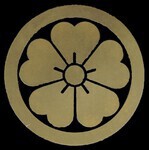





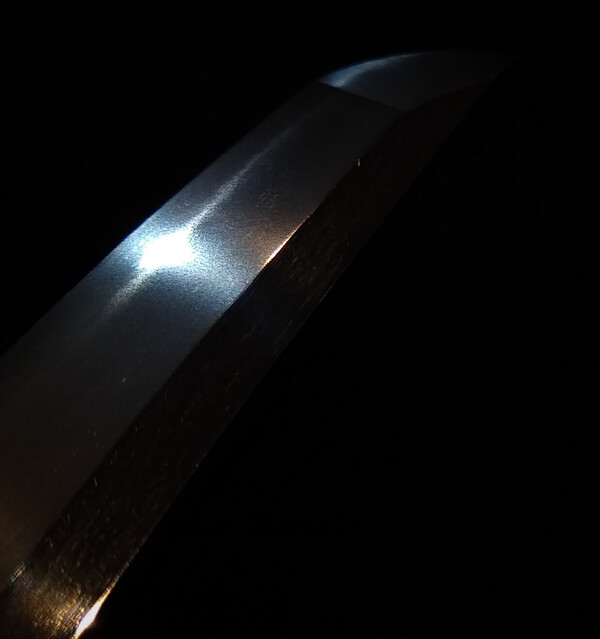
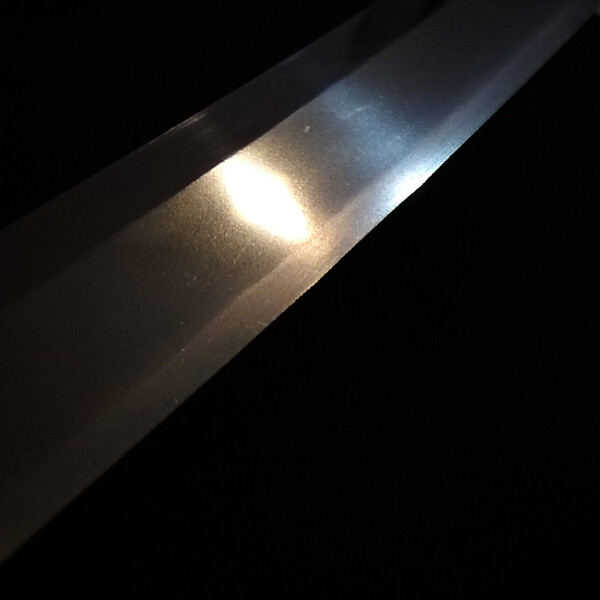



.thumb.jpg.bc10b59027a00aa142dce0349f3ba9e0.jpg)

